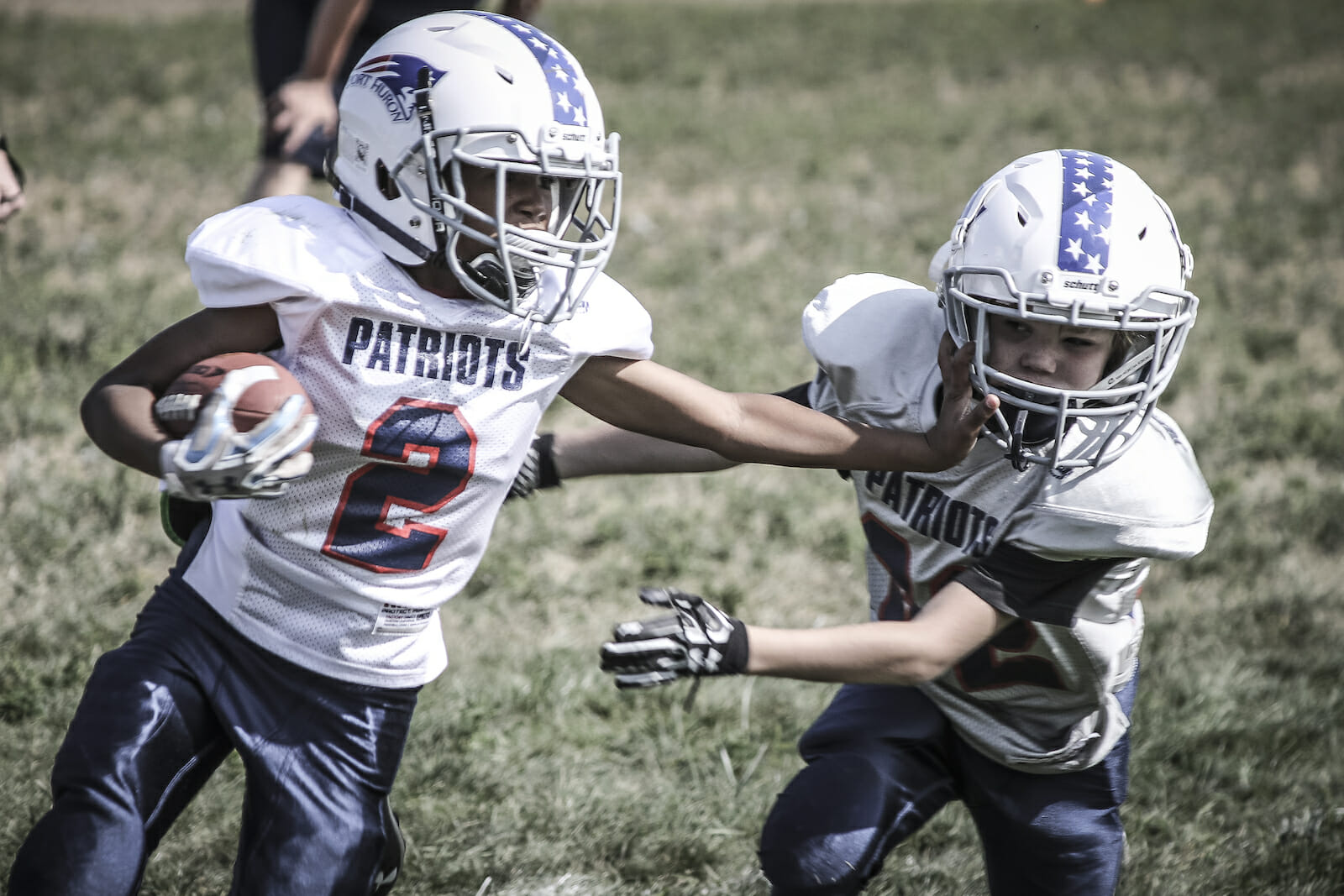
Health
Youth Football: Should It Continue?
A lot of talk has surfaced regarding the physical harm American footballers sustain throughout their careers. Evidence is mounting that those who manage to retire from football without brain injury are in the apparent minority. I’ve written here before musing on whether or not American adults will ever tire of watching modern-day gladiators rough each other up on the field year after year in the name of good ole sporty fun and entertainment.
So…what about our kids?
American-style football isn’t uniquely violent (rugby comes to mind also). But it’s a national pastime that shows up early and then sticks around for most of our lives. A lot of us live and breathe football and encourage our kids to get involved during their school careers, almost like a rite of passage.
What’s the danger that football poses to our kids? And is there a way to make football safer for kids to play? Let’s take a look.
Where’s the Harm in Youth Football?
In adult footballers, the long-term risks from sustaining repeated blows to the head and concussions include changes to brain functioning, changes in personality, depression, dementia and thoughts of — and attempts to carry out — suicide. The NFL is under a lot of pressure to make policy changes in the name of protecting player health.
So, what about youth football? Is there just as much potential for harm here as there is in the adult version?
Research says that may be the case. In 2016, specialists from Wake Forest Baptist Medical Center wanted to know about the possible long-term effects of blows to the head, including those not accompanied by a concussion, in school-aged kids. The simplest way to sum up their research is to say that the more impacts a child sustains to their head, the more changes in brain tissue that a child develops. No concussion required.
As these are preliminary findings, we don’t know yet whether these changes will lead to disease and whether they will heal over time. But researchers still have some thoughts on what they found:
“This is important, particularly for children, because their brains are undergoing such rapid change, particularly…from maybe 9 to 18. And we just don’t know a lot about it…They are hitting at extremely high levels.”
The “high levels” mentioned by Dr. Alex Powers was a reference to the impact sensors his researchers placed on each boy’s helmet. He continued: “We have detected some changes in the white matter…And the importance of those changes is that the more exposure you have to head impacts, the more change you have…Do these changes persist over time or do they just simply go away? Do you get more changes with more seasons of play? And most importantly, do these changes result in any kind of long-term change in function like memory or attention or anything that would be important in your ability to function day to day?”
A shocking number of professional football players have committed suicide and were later found to have suffered from chronic traumatic encephalopathy (CTE). In one study of 111 former NFL football players who killed themselves, all but one had signs of CTE — a condition linked with repeated blows to the head and which results in worsening confusion, memory loss, impulse and judgment problems, depression, anxiety, aggressive behavior, suicidal ideation, and dementia. These symptoms don’t appear right away — they seem to incubate for many years before former footballers start showing signs of distress. Sometimes it takes decades.
So, it’s not a stretch to say that full-contact football is, at best, a calculated risk we choose to subject developing brains to. At worst, it might be something we need to avoid altogether or change dramatically, in the name of keeping all these young brains healthy. So, let’s try to answer a worthwhile question — can we make football safe for kids?
Can We Make Football Safer?
Short of banning the sport entirely, there are some common-sense fixes we can make, today, to at least limit the risk of injury.
The Coalition for Concussion-Free Schools has a mission of educating school districts and parents of the dangers of full-contact sports. Armed with the scientific findings you just read about, plus tragic stories from parents who lost their young ones to complications from head and brain trauma, the group seeks to introduce safer alternatives to schools, such as flag football, and help make positive changes to how physical education and the spirit of competition are taught in American schools.
“Heads Up Football” is another program that seeks to improve the safety of footballers in American schools. The program provides training for coaches on the subject of proper protective equipment fitting, less hazardous tackling techniques and more. Reviews of the program are mixed, with some questioning the value of altering regular tackling techniques. So-called “heads-up” tackling — it’s exactly what it sounds like — might keep some kids safe, but it doesn’t feel like a comprehensive fix.
Equipment can make a difference in keeping some parts of the body safe. For example, wearing a mouth guard makes it 60 times less likely that kids will sustain damage to their teeth. Knowing this, mouth guards shouldn’t just be required for all players. They should also be free to anyone who needs one. Sending kids to play sports without a mouth guard should be as unthinkable as riding bikes without helmets or riding in a car without a seat belt.
And speaking of helmets — some companies are boasting new designs that cushion the head more effectively against the kinds of blows that lead to concussions and, later, CTE and other conditions. While they’re targeted squarely at youth football players, the price tag puts them out of reach of all but the most well-heeled parents and school districts. We’ve been hearing about these breakthroughs for years, but it seems like it’s only the odd school here or there that seems to have the money required to outfit their entire team with something other than the traditional helmet design.
At least 39 high schoolers died between 2000 and 2012 due to football injuries. And while estimates vary, we also know that physicians see as many as 3.8 million cases of sports-related concussions every year.
American-style football is called a national pastime. It brings people together and gives athletically inclined youngsters their first taste of team spirit and fearlessness in competition. But it’s time to make some compromises. Switching to flag-based, no-tackle football is just one change we could make that would save a lot of grief in the long run.
Think it takes the heart and soul out of this most competitive of games? Think again — the word “coup” comes from the Native American practice of touching an armed enemy in the heat of battle. Not striking or tackling him, but touching him to signal bravery and superiority. It’s a sign of fearsomeness that also feels weirdly civilized, even in times of war. Maybe it’s time to go back to our roots.

